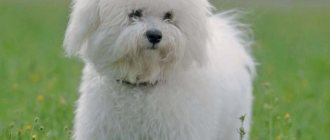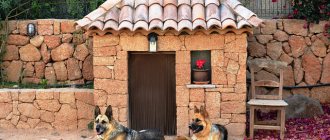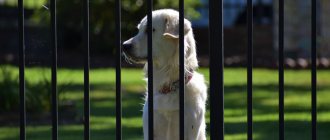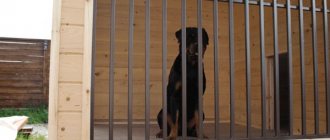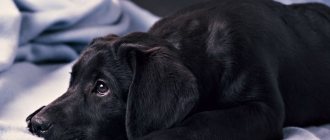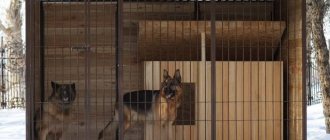Main selection criteria
When making a choice, start from your capabilities and preferences. To do this, you will need to take into account the size of your living space, your lifestyle and amount of free time, as well as preferences regarding the appearance and behavior of your future pet.
Residence and area
For a small apartment, a medium or small cat with a calm character is suitable. Large representatives with a developed hunting instinct and an awl in the butt will feel uncomfortable in it - they will be more comfortable in a private house with a fenced area.
The character of the future owner and the whole family
Lonely people in need of communication should take a closer look at talkative cats. Such pets become strongly attached to their owners and help with household chores with great enthusiasm.
It is recommended to take into account your activity. If you like frequent walks and trips out of town, then pay attention to playful breeds that quickly get used to wearing a harness.
Don't forget about other family members. If an extrovert who loves noisy parties lives with you, then the future pet should be distinguished not only by its friendliness, but also by its lack of fear of strangers. Otherwise, constant fear from loud sounds and unusual smells will negatively affect his psyche.
Length of stay of the owners of the house
Your work schedule also plays a significant role. If you often stay late at work and go on business trips, take a closer look at animals that tolerate loneliness well. Otherwise, a pet left for a long time may fall into deep depression or create a mess as a sign of revenge for inattention.
Self-sufficient cats who know what to do with themselves are suitable for workaholics. They don't need to communicate 24/7 and won't bother you if you're not in the mood. Despite their independent character, these “mustaches” are also partial to affection and love to sit in your arms.
The solution for cat lovers is to have two or more pets. They won't be bored much together.
Having small children
Not all children know how to handle animals, and some, due to their age, are not yet capable of learning. For this reason, for children under 3 years of age who cannot control their emotions, it is better to choose a patient and friendly “mustache.”
Such a cat will not only tolerate all pranks, but will also support any children's fun. If your child does cross the line, instead of being hit with a clawed paw, he will simply temporarily lose his playmate.
Presence of other pets
Friendly cats get along well not only with children, but also with other pets. Particular caution should be exercised only by owners of birds, rodents and aquarium fish. Make sure your pet has a weak hunting instinct. Otherwise, the fish birds may become prey.
Pet gender
Having decided on the breed, it is logical to move on to choosing the sex. Each has its pros and cons, so analyze which ones are more important to you.
Females are distinguished by greater cleanliness, docileness and friendliness. They only cause problems during estrus and pregnancy. In the first case, you will have sleepless nights due to loud screams and periodic attempts to escape, and in the second, you will have to find owners for newborn kittens. If there are no plans for breeding, everything can be easily solved with the help of sterilization.
Males are more dominant. They rarely accept affection against their will and often show aggression if something does not go according to their plan. They are also characterized by marking their territory, accompanied by a rather pungent and unpleasant odor. As in females, this problem can also be solved surgically. The advantages of males include attachment to the house and rapid toilet training.
Please note that gender differences are very arbitrary. There are always exceptions to the rules, so this point should be considered only as an additional one. Unusually affectionate cats and extremely aggressive cats are far from uncommon, but the nuances regarding puberty are always static.
Requirements for the coat and color of the pet
The difficulty of grooming directly depends on the length and thickness of the coat. Long-haired individuals with a thick undercoat shed very heavily. Without regular brushing, their fur becomes tangled and can lead to dermatitis.
Completely hairless cats are not so easy either. They sweat a lot and are constantly cold. Because of this, they need to be bathed frequently and dressed in warm clothing.
When choosing the type of coat, proceed from the amount of free time and desire to engage in grooming procedures, and when choosing a color, simply be guided by your ideas of beauty.
You may have heard that white colors are less allergenic, but in fact this opinion has not yet been confirmed by felinologists. For this reason, if you have allergies, it is better to take into account more reliable factors.
Choose a friendly animal
To answer the question of which cat is best to have in an apartment so that both you and your new friend can live comfortably, you need to take into account the character traits inherent in felines.
When choosing a cat for your apartment, make sure it is not too noisy
For the conditions of a comfortable city apartment, it is important to expect from a cat:
- flexibility and the ability to quickly adapt to new things;
- so that the animals are not too noisy;
- the ability to calmly endure loneliness for more than 8 hours;
- sociability;
- that she does not have a strong attachment to a particular place.
When getting a pet, also take into account your lifestyle, for example, some cat breeds cannot tolerate noise and the owner’s constant guests, take this fact into account.
Which cat is better to have in an apartment: top breeds
In addition to size and activity level, there are a few other things to consider. The top cat breeds for apartments, presented below, include the most friendly animals, as well as those who are famous for their unpretentiousness, cleanliness and hypoallergenic properties.
Unpretentious
The most unpretentious cats are those who are unpretentious to food and do not require complex care. These include Bengal, Burmese, Siberian and Rex.
It is most difficult with long-haired, hairless, flat-faced and fold-eared animals. The first ones shed profusely, the second ones constantly sweat, the third ones suffer from increased tearing, and the fourth ones are vulnerable to ear diseases. If you have little free time, then it is better to immediately refuse to buy cats with the listed features.
Clean
Cleanliness is characteristic of all cats. This is their advantage over dogs. Falling asleep in the litter box, urinating in the wrong place and carelessness in grooming are not breed characteristics at all, but the result of errors in upbringing or a consequence of health problems.
Hypoallergenic
It is important to understand that hypoallergenic cats also cause allergies, but much less often - or with milder symptoms. Contrary to popular belief, the source of the negative reaction is not animal fur at all, but a protein foreign to humans called uteroglobin, or Fel D1. It is found in all physiological fluids, including saliva. For this reason, when licking, the protein spreads throughout the fur, and when it falls out, it spreads throughout the house.
When choosing a hypoallergenic pet, focus on the following factors:
- Low concentration of uteroglobin in the body. The lowest protein level was recorded in “Siberians”, Neva Masquerade and “Balinese”.
- Bald skin. Such animals simply need to be washed more often to remove all dangerous secretions. Hairless cats include sphinxes, elves, and Ukrainian levkoys.
- Lack of undercoat. The less hair, the weaker the shedding, so it is much more difficult for the allergen to spread. Rexes, Lycois, Siamese, Napoleons, Javanese, Ocicats, Burmese and Bengals have this feature.
Please note that hypoallergenicity does not exclude preventive measures. These are: frequent washing, combing, periodic change of cat litter and hand washing.
Calm and friendly
The “British” and “Persians” are distinguished by their angelic calmness and laziness. Both are friendly, but do not tolerate being annoying. For this reason, they are not suitable for children, but they get along well with teenagers and some primary schoolchildren who understand the boundaries of what is permitted.
Good with children and other animals
Such pets include Ragdolls, Exotics, Neva Masquerade, Thais, Burmillas and Burmese. They not only take part in joint games with pleasure, but also never enter into open conflicts. For this reason, be sure to ensure that children and other pets do not harm your peace-loving “whisker”.
Ragdoll
Translated from English, the name means “rag doll,” which well reflects the character of these animals: when you pick them up, they look like “purring rags.” Ragdolls are calm cats with increased patience and affection towards family members who do not like to be alone. They are distinguished by a good appetite without a tendency to obesity and ease of care. But you need to be extremely careful with these cats: they do not know how to group themselves when falling, so ragdolls cannot be thrown to the floor even from a height of human height. And when living in an apartment, you should especially avoid open windows, even for residents of the first floors.
To become the owner of a ragdoll kitten from trusted breeders, you need to pay between 15-45 thousand rubles.
What breed of cat is best to choose for your home?
If you are the owner of a private home, then the size of the animal plays a secondary role. Living outside the city requires unlimited access to walks in the yard and the occasional infestation of rodents. In this case, it is recommended to pay attention to the most active breeds and mouse cats. Good health will also help.
Mice catching abilities
The appearance of rodents on the site is a rather serious problem that can easily be solved by a mouse cat. The most capable representatives include the following:
- Siamese;
- Russian blue;
- Cymric;
- British;
- European Shorthair;
- Maine Coon;
- Kurilian Bobtail;
- Siberian;
- Manx.
Please note that the hunting instinct is best developed in females. This is due to the need to protect and feed the offspring.
Desire for frequent walks outside
Most mustachioed pets are typical homebodies, but there are exceptions. Revelers include the following representatives:
- American Shorthair;
- savannah;
- oriental;
- Abyssinian;
- Bengali;
- Siamese
All of these animals are characterized by increased activity, intelligence and curiosity. For this reason, when living in an apartment, it is recommended that they be walked on a leash, like dogs.
Such cats quickly get used to wearing a harness and with great enthusiasm keep company with their owners in the nearest park or ordinary yard. In a private house, everything is even simpler, since it has a very convenient free-range option.
Good health
Life expectancy is influenced not only by living conditions, but also by the health received from nature. The following representatives have the strongest immunity:
- Siberian;
- Russian blue;
- Norwegian forest;
- Bengali;
- Maine Coon;
- Siamese;
- American Shorthair.
On average, they live about 15 years, but with proper care this figure increases to 20 years.
Calm and self-sufficient: cats for busy singles
Cats with a gentle and balanced disposition are the dream of an ever-busy person who wants to have a pet, but due to circumstances cannot often be at home. Such cats are not active and energetic; they spend most of the day in a languid and sleepy state, without interfering with a person’s business.
The calmest representatives of the cat family:
Ragdoll
- ragdoll - cats that look like soft purring rags, have a calm temperament, willingly allow themselves to be petted, are often clumsy and do not know how to jump from great heights, living on the upper floors is contraindicated for them;
- Russian Blue - such a pet does not need constant attention, but if desired, it will willingly play with a person and keep him in good company, moreover, these cats are unusually beautiful and unpretentious in care;
- Burmese - fluffy, charming creatures with blue eyes, they know how to independently entertain themselves without damaging the apartment, and have good health.
Burmese cat
A few more unusual cat breeds
If we abstract from the size of the living space, then we can highlight several more unusual options. In this section we will talk about cats with an original appearance and canine devotion.
Beautiful color
First of all, the beautiful color adds originality. The most effective include the following:
- Lilac. The combination of pink and purple is typical for the “British” and “Oriental”. The purple color is even present on the nose and paw pads.
- Tortoiseshell marble. Both colors are known for their rarity, but their combination breaks all records. This coloring appears only in females (American Bobtail, Munchkin, Maine Coon, Rex, Scottish).
- Cinnamon. This coloring resembles ground cinnamon. The intensity varies from light red to dark brown. With a lighter color, the paw pads are always pinkish-brown, and with a darker color, the pads are the color of the coat. Found among the "British".
- Spotted, or tabby. A very attractive color, characteristic of wild cats, is inherent in the Egyptian Mau and Bengals.
The listed colors greatly influence the price. Due to the rarity and difficulty of breeding, an animal with such colors will be much more expensive than its standard counterparts.
Unusual sizes
Dwarf breeds are very popular among cat lovers. These include:
- bambino;
- munchkin;
- Dwelf;
- minskin;
- Napoleon;
- lambkin;
- Skookum;
- Singaporean;
- Kinkaloe;
- skif-tay-don.
The last representative is the smallest. Its minimum weight is only 900 g, so an adult cat can easily be confused with a kitten.
On the contrary, the largest representatives include Maine Coons, Savannahs and Chausies. Savannahs and Chausies of the F1 generation (that is, the closest to wild relatives) can reach a weight of 15-20 kilograms and are the size of an average dog.
Original appearance
In addition to color and size, it is recommended to pay attention to other features of appearance. Among the most original breeds are the following:
- orientals - mustachioed aliens with big ears;
- Bombay - a pet resembling a wild panther;
- American Curl – a very fluffy and unusually kind cat with curlicue ears;
- dwelf - another alien, reminiscent of a rex, with ears like a curl;
- rexes are unique owners of curly fur coats;
- Savannah generation F1-F3 is a smaller copy of the wild serval.
Note that in the latter case it is very important to avoid close relationship with the wild ancestor. It is best to take kittens from the second generation, or F2. Their blood contains only 25% of the Serval, which excludes innate aggression.
Playfulness and dog loyalty
Both traits are characteristic of the Abyssinians, Orientals and Kuril Bobtails. All of them are famous for their hyperactivity and selfless love for their owner. For this reason, they endure even temporary separations and changes of ownership with great difficulty.
It is better to leave them with friends during their departure. This recommendation should be followed not only on vacation, but also in the event of a 2-3 night stay with friends.
Choosing a kitten
After drawing up a portrait of your future pet, you can proceed to the actual purchase. There are also some nuances here.
Optimal age
Never take newborns. A decent breeder will not even offer you this option, so take this into account to identify fraudsters.
The difficulty of caring for a baby is not the worst thing. Early separation from the mother is fraught with mental disorders and weak immunity. For this reason, the most optimal age is 3 months. At this point, the kittens begin to feed themselves and receive all required vaccinations.
In a nursery or from a private owner
Another important point is the choice of seller. You can contact a nursery or a private owner. In both cases, the kitten must be accompanied by 3 mandatory documents:
- veterinary passport;
- metric or pedigree;
- contract of sale.
The advantage of the cattery is that it must be registered in the system of professional cat clubs. Private traders often work unofficially, which increases the likelihood of deception about the relativity of the animals' pedigree and health.
How to take a closer look at character
Here it is better to build on the breed characteristics and behavior of the baby’s parents. A kitten's reticence at first meeting can be deceiving. Despite this, many choose a pet based on the principle of contact. If the baby climbed into your arms without fear, then at least he liked you.
Health and activity
You can find out about your health status from your veterinary passport. It also makes sense to check the documents and certificates of the parents to make sure there are no hereditary diseases.
His activity can also tell about the baby’s well-being. If he behaves apathetically and distantly, and his appearance causes serious concern (his eyes are festering or closed by the third eyelid, his tummy is very swollen, there are bald spots), then it is better to refuse the purchase. Otherwise, the kitten’s disease may be transmitted to other pets after they meet.
Do you like the article? 255
To overpay or not to overpay?
When purchasing a cat, you may come across different prices, and in different regions they differ significantly, so the question arises, why in some places they give purebred cats for absolutely nothing, and in other places they ask for fabulous money for them? This all depends on several factors:
- Each nursery must maintain its own brand. It’s the same as with selling things: branded clothing costs much more than similar Chinese products. The nursery will provide you with documents for the kitten, which will indicate its pedigree, and this is very important if you want to reproduce the animal in the future. Of particular value are show-class kittens whose parents have won prizes in shows and exhibitions. If this is not important to you, then you shouldn’t overpay.
- Compliance with breed standards. Experts will immediately suspect incest in the kitten’s appearance. This is called a defect, a deviation from the breed. Sometimes such defects can occur in a kitten of purebred parents. But still, it is not suitable for exhibitions, unlike its successful brothers and sisters, and therefore its price will be much lower.
- The age of the kitten also plays a role. It is best to sell it at the age of 2-3 months. Older kittens are considered “grown up” and are cheaper.
- Sometimes it happens that a kitten is sick, and the owners try to sell it quickly while the disease is not noticeable. In this case, the price may also be low.
The Javanese cat endures loneliness without its owners during the day.
There are different cases, for example, at the bird market, a purebred kitten can be bought for ridiculous prices. Owners sometimes don’t know how to quickly get rid of their offspring. If you are not interested in exhibitions, medals and regalia, then this is also a good option for purchasing a furry miracle. It’s up to you to choose which cat is best to have in your apartment.
Important! If you want a cat to perfectly suit your lifestyle, then it is better to take an animal from breeders.
They will tell you which cat is best to have in your apartment and select a pet for you, taking into account your interests. But it’s worth talking about your wishes in more detail so that there are no disappointments later.
For example, it is very important to know how long you will be away, since some breeds cannot tolerate being alone, it is also important whether you have enough time to care for the cat, this is important for long-haired breeds, whether you plan to have offspring, etc.
Ragdoll has an easy character
A good breeder is also interested in ensuring that his kitten ends up in kind and caring hands. It may take time for you to choose the right option, but if your desires and capabilities coincide, you will gain a reliable friend for life.
